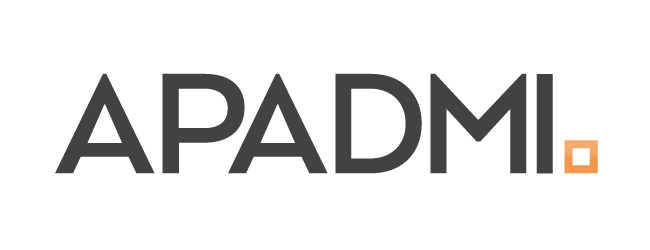
- Zühlke’s global Diversity and Inclusion (D&I) policy aligns practices across all of its offices worldwide.
- The policy was developed collaboratively by senior team members in different regions, drawing on best practices and local learnings.
- The impact of the policy is already being felt, and the team is currently planning additional ways to measure and further evolve D&I initiatives across the business.
Our D&I policy is the result of collaboration across all our teams worldwide. As a global business, we wanted it to have a global impact – ensuring no matter where people engage with Zühlke, we’re making use of the same inclusion practices. For this article, we spoke to two team members involved in the policy’s creation: Fabienne Enderlin (Chief People Officer, Zühlke Asia) and Maurice Roach (Head of Financial Services, Zühlke UK). Read on to find out a little more about the thinking behind it, the challenges along the way, and what it means for the business now it has officially been implemented.
The Purpose Behind the Policy
With continued growth into new regions, a formal D&I policy became increasingly necessary for Zühlke. As a starting point, it was important to recognise that there were both pockets of best practice as well as areas for improvement in the business. Harmonising the approaches through overarching guidelines was therefore a vital step in ensuring that all our people have a consistent experience and equal access to opportunity.
As well as supporting individuals, focusing on D&I also benefits the business as a whole. Homogenous teams tend to come up with a solution that’s based on their shared knowledge. “But the issue is that the core problems we’re tackling are complex, and they’re not solved using existing thinking,” says Maurice. As he goes on to elaborate, members of diverse teams are going to ask deeper questions and introduce solutions that have potentially been tested in completely different spaces. It’s about creating robust discussions and diversity of input that truly lead to innovation, rather than just working from a space of the known and conventional.
Taking a Meaningful Approach
One thing both Fabienne and Maurice were sure to emphasise was the fact that the process was engineered to result in a D&I policy that was as meaningful and actionable as possible. “I have no interest in tokenism, and I made it clear that I would only be involved if we were going to produce something that made a real change at the end of the day,” Maurice explains. Fabienne echoed similar feelings, which is why was heartened by the collaboration between senior people in the working group. “It definitely wasn’t seen as a task to simply be delegated, and that emphasised the importance assigned to it for me,” she says.
As well as pulling in people from the right levels, there was also a selection of members from the full geography of the business. That meant inclusion was built in from the beginning, bringing together a range of experiences and opinions from all of the Zühlke regions. The process was guided by best practices and input from third-party organisations working in this space (like Stonewall in the UK), but ultimately the focus was on making any decisions not simply well-informed, but also actionable for us too. As Maurice describes it, “It has a similar spine to many other comparable policies, but with our own definite nuance.”
All this is not to say that the development of the policy was not without its challenges. One of the major ones was the fact that each location was at its own stage in its D&I journey. “We had to acknowledge that there were different starting points – we couldn’t write a document that made promises that just weren’t achievable for some locations,” explains Fabienne. Issues like gender parity, for example, are a big focus in Europe but less so in Asia because of the social context. While in e.g. Singapore a diverse racial background is a given, other locations like Germany have a different starting point. That’s one of the reasons the group focused on getting the fundamentals fully covered, to begin with, providing a base everyone could work off and then moving on to its ambitious goals in future iterations.
Making a Measurable Impact
Now that the policy has been published, what happens next? Well, both Fabienne and Maurice emphasised that this is only the beginning. It needs to be lived, continuously evolved and assessed. Some prerequisites have now been set, such as the annual definition of goals and measurement of achievement, as well as a rule that no more than 70% of a team can come from the same gender, nationality or age group. Every person involved in recruitment has also completed interview training to address the issue of unconscious bias, and digital tools are used to ensure that inclusive language is chosen when writing job descriptions.
As a metrics-driven organisation, one of the major focuses will now be deepening the way D&I is measured and tracked to make sure any impacts are truly meaningful. As Fabienne summarises, “You can discuss things for hours and paint a great picture, but you have to decide on what you actually want to achieve and how you’ll measure your progress.” Zühlke has a distinct advantage when it comes to this. As a tech company, developing systems to gather and analyse data is second nature to its teams. But as Maurice points out, “The quest is how to do it in a way that’s safe and helpful?” Solutions have now been developed that will allow people to share information in a secure and comfortable way, and these will be deployed after they've undergone a thorough review process.
“What’s important is that we’ve stated what it is that we believe publicly, and now we can hold ourselves accountable,” says Maurice. To both Fabienne and Maurice, this is a key consideration, because the policy that was developed is only a start, albeit an important one. “This is the beginning of a longer journey for us – we haven’t got it totally right yet, but now we’re constantly trending towards where right is,” explains Fabienne. This is also a space constantly changing as perceptions in the world do, so having a living, breathing D&I framework that’s made to grow is the only way to ensure it will be relevant both now, and in years to come.









